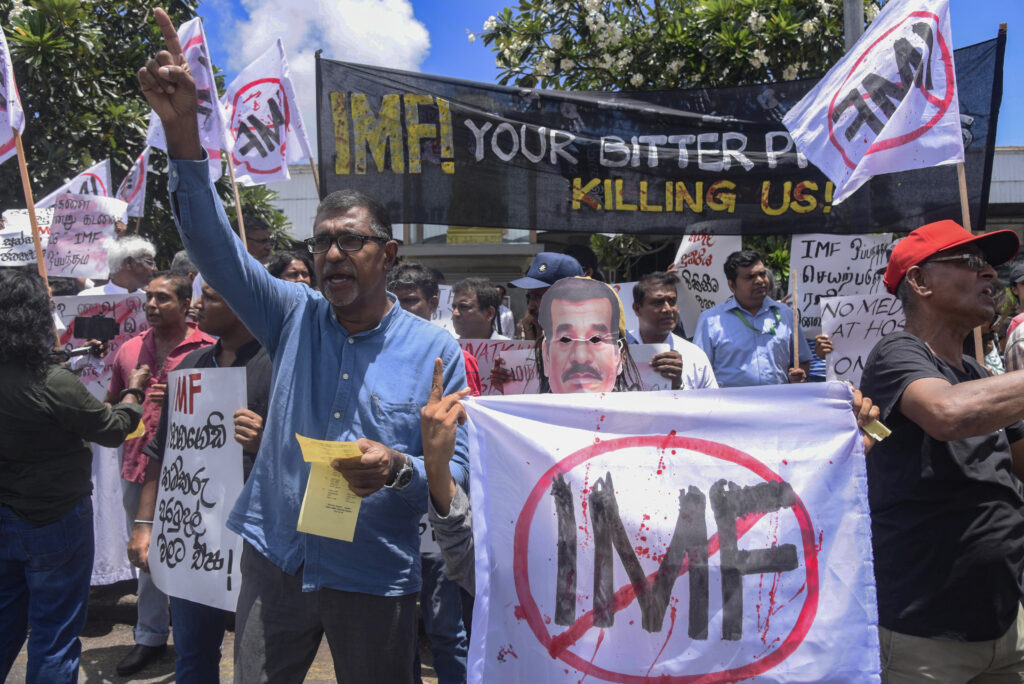In April 2022, crowds of Sri Lankans gathered on the streets, protesting the lack of essentials such as fuel and medicines. Amid an economy lurching from crisis to crisis, chaotic resignations ensued, a sovereign debt default was declared for the first time and bailout discussions were finally initiated with the International Monetary Fund (IMF).
The IMF’s second staff-level review, which concluded in March 2024, deemed that recent policy measures had yielded ‘good progress’.
While many would agree that economic conditions are better today than they were previously, macroeconomic stability and accompanying signs of economic growth are not a source of immediate comfort to the many who have lost jobs, had their incomes shrink and experienced an abrupt decline in living standards.
The crisis, as expected, hit the less well-off disproportionately. Poverty is estimated to have doubled to 25 per cent, with 60 per cent of households experiencing a decline in income and 22 per cent falling into debt. The fiscal stabilisation measures under the IMF commitments resulted in several drawbacks, including steep tax increases, withdrawal of subsidies and spending freezes.
Bettering these economic hardships has inevitably become the rallying cry for the presidential aspirants lining up to face voters in the latter half of 2024. The incumbent President, Ranil Wickramasinghe, can claim credit for taking the difficult but necessary steps when no other options remained. Yet, holding elections at the mid-point of Sri Lanka’s stabilisation-recovery path — where the pain of reforms is yet to be followed by the presumed longer-term benefits of growth — has thrown the contest wide open.
The crucial question at the forefront of the election is what candidates might be tempted to promise and whether they can then deliver. The quickest way to lift jobs and incomes is by boosting growth. In the fourth quarter of 2023, GDP growth jumped to 4.5 per cent, a significant rebound, albeit from the steep 12.4 per cent contraction in the same quarter in 2022.
The total 9.5 per cent contraction in output over the 2022–23 period may never be recovered, as the economy struggles with modest growth expectations averaging 3 per cent in the medium term. The evidence on output recovery following economic crises and default outcomes varies widely. While some economies bounce back, others do worse, experiencing permanent output losses — where output recovers but does not return to the previous growth trajectory.
For those who may be tempted to loosen the fiscal squeeze to nudge growth, the problem lies in doing so without derailing Sri Lanka’s IMF commitments. There is only room for tweaks at the margin on both the expenditure and revenue fronts. Vote-winning quick fixes have turned out to be very costly in the past and the stakes are even higher this time around. A premature fiscal loosening will unsettle Sri Lanka’s creditors, as will any attempts to push down the timeline to achieve benchmark targets on fiscal ratios.
Creditors typically prefer early settlements to deferred settlements as the stabilisation process drags on. Creditors and investors alike know that 2024 is not the end of Sri Lanka’s electoral cycle — parliamentary elections are scheduled in 2025.
This suggests the need for caution on the economic front. Relaxing fiscal austerity should be tightly focused on scaling back inefficient spending and using the money to target relief for the poor. In the interim, monetary policy can be used as the main tool to boost demand, while recognising that there are limits. This recovery path is more anaemic after an acute economic shock, where consumers and businesses are weighed down by debt, as evident in Sri Lanka’s experience.
The priority over the next few months is to build on existing progress and finalise an external debt restructuring deal before the elections. Sri Lanka is seeking a five-year moratorium from its bilateral creditors and bondholders with the intention of starting repayments in 2028.
A debt treatment plan with India and the Paris Club has progressed, as have talks with China. Among bondholders, negotiations are continuing with the participation of an ad hoc group, while a lone bondholder is also pursuing Sri Lanka in the courts. A final deal will require agreement among all these private and official creditors. If negotiations are not concluded ahead of the elections, the delay will add another layer of uncertainty for months to come.
To avert future crises, Sri Lanka must take cautious and measured steps to bring about real change in its economic fundamentals. This approach suggests that there is little room for boom times just yet. On the balance of probabilities, it is preferable to acknowledge that recoveries after economic crises and defaults are generally weak and fragile. Embracing a period of modest growth is preferable to once again plunging into chaos due to bad policymaking.
Dushni Weerakoon is Executive Director and Head of Macroeconomic Policy research at the Institute of Policy Studies of Sri Lanka.


Leave a Reply